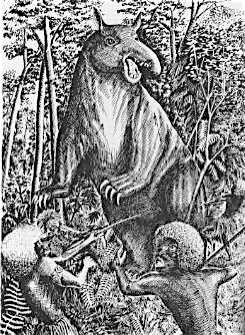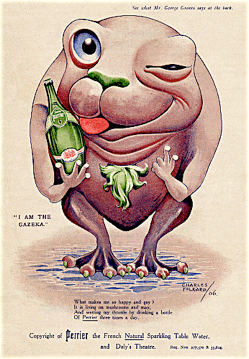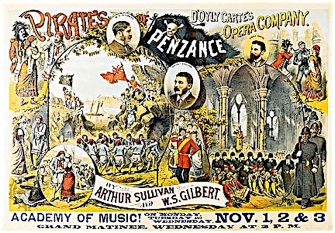Our Military Critic Speaks
[A correspondent recently complained to a contemporary
that “the actor in touring companies is badly trained
in military matters”, and is not convincing when he is
playing the part of a soldier.]
Oh, we take him from the wilds of Maiden Lane;
Twelve bob a week we give him for a wage;
We try to teach him not to look insane
When making his appearance on the stage.
He doesn't often have a lot to do
(Just enter r. and exit l.u.e.),
But – the fact there's no concealing,
You – well, somehow can't help feeling
That he isn't all a soldier ought to be.
O-oh, histrion TOMMY ATKINS,
I've no doubt you do your best;
But there are a few improvements
You'll allow me to suggest.
Don't salute when you're bare-headed:
It is not the usual plan,
Scarcely, so to speak, the hall-mark
Of a military man.
His regiment's the "Loamshires" or "The Blanks",
And the discipline's not rigid there, I fear;
For nobody says, "Silence in the Ranks!"
When he greets the hero's speeches with a cheer.
Real soldiers when on sentry-go, I'm told,
Are very seldom heard to air their wit;
But if he says nothing funny,
Then it's "Give us back our money!"
From the patron of the drama in the pit.
O-oh, histrion TOMMY ATKINS,
That is where you come to grief;
Real soldiers hardly ever
Deal in “humorous relief”.
Though I've heard the gallery giggle
When your funniments began,
Yet, believe me, humour's foreign
To the military man.
He's in the mess-room scene in Act the First
When the villain tells the hero that he – knows!
When the latter bids the reptile do his worst
He separates them ere they come to blows.
In the big court-martial scene in Act the Third
He hangs about (left centre) and salutes,
But one feels constrained to mention
That, when standing to attention,
A warrior rarely gazes at his boots.
O-oh, histrion TOMMY ATKINS,
You'd be splendid, I've no doubt,
As a pantomime gazeka
Or a “sudden noise without”;
But you're rather like a waxwork
Or a doll that's stuffed with bran;
And this makes you unconvincing
As a military man.
First published in Punch, October 17, 1906.
Notes:
- l.u.e.: left upper entrance
-
-Loamshires and Blanks: Loamshire Regiment is a placeholder name used by the British Army to provide examples for its procedures. For example, the Loamshire Regiment is provided by the British Forces Post Office to show how to write a British Army address, and is used to set out specimen charges for violations of military law. When writing to a Field or General Officer, not well known to an officer, he should start ‘Dear General Blank’. To a Subaltern or Captain he should start ‘Dear Blank’.
-
-Pantomime Gazeka: The Gazeka, also known as Monckton's Gazeka or the Papuan Devil-Pig, is an obscure cryptid, a hypothetical or perhaps mythological animal, said to have been seen on Papua New Guinea in the early 20th century. It is said to resemble a tapir or giant sloth, having a long, proboscis-like snout, and some theories suggest it may be the descendant of an extinct marsupial. The Gazeka,a mythical beast, was the creation of the well-known English comic actor, George Graves (1876-1949), who introduced it as a bit of by-play in the musical, The Little Michus at Daly’s Theatre, London, in 1905. As a result, Graves’s little idea became a fad of the season and a competition was mounted to encourage artists to give sketches of what the beast might look like. Charles Folkard won the competition and the Gazeka suddenly appeared in the form of various items of novelty jewellery, charms, etc, and was taken up by Perrier, the sparkling water makers, for a series of advertisements. The Gazeka also featured in a special song and dance in the entertainment Akezag, at the London Hippodrome at Christmas, 1905.

The text on the reverse of the Perrier advertisement below reads:
“The True History of the Gazeka.
By the Discoverer, George Graves.
(Described by him in Act II of The Little Michus at Daly's Theatre.)
It has been said that my little Gazeka is the outcome of a fevered brain – a late night at the Club – an over-heated imagination – even worse things have been said of him – poor little fellow. Nothing of the sort, my ‘Gazeka’ is the product of accident.

[signed] George Graves.”



